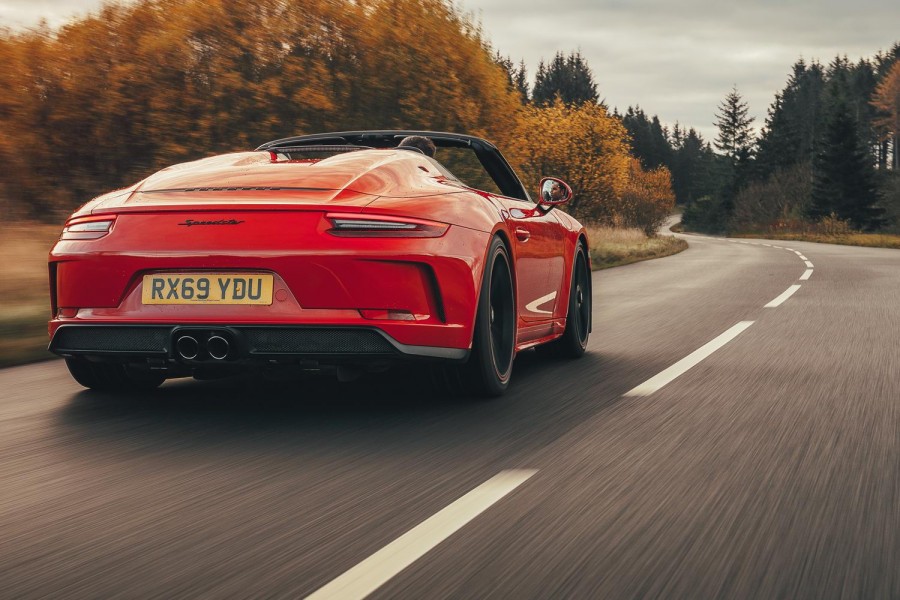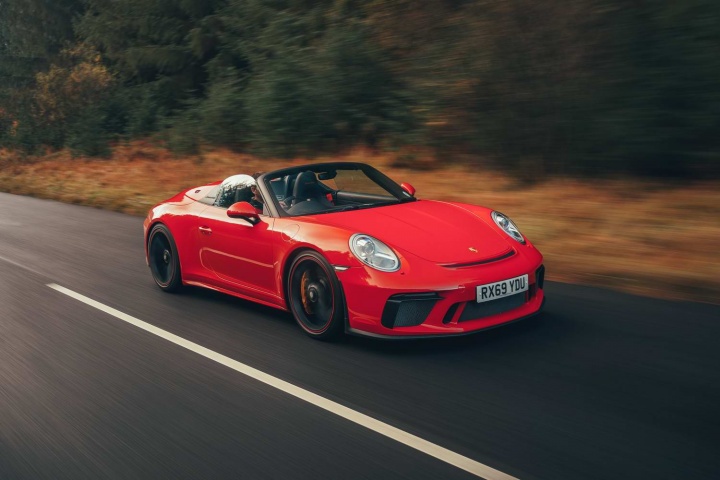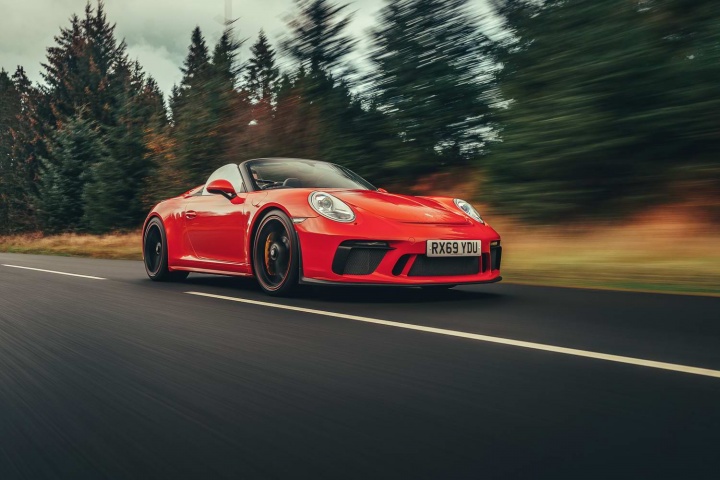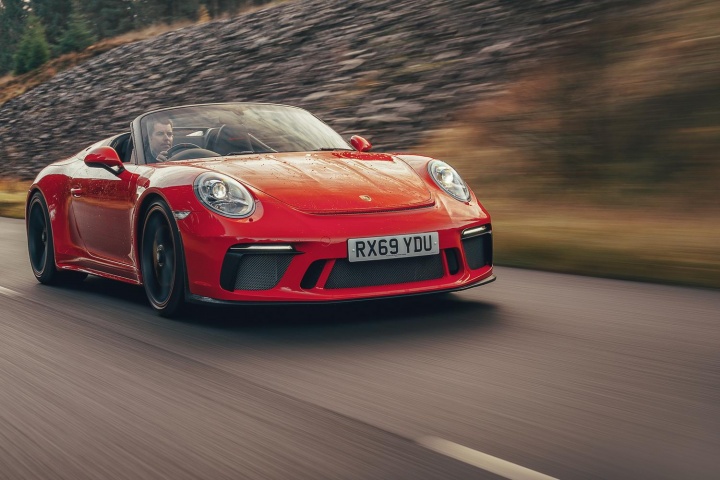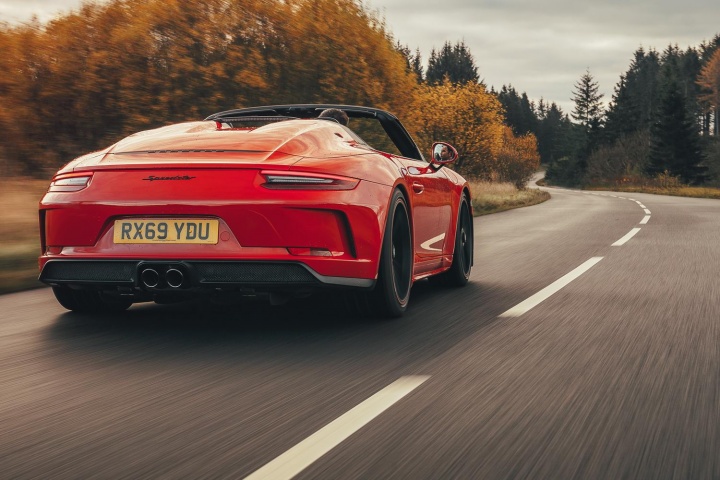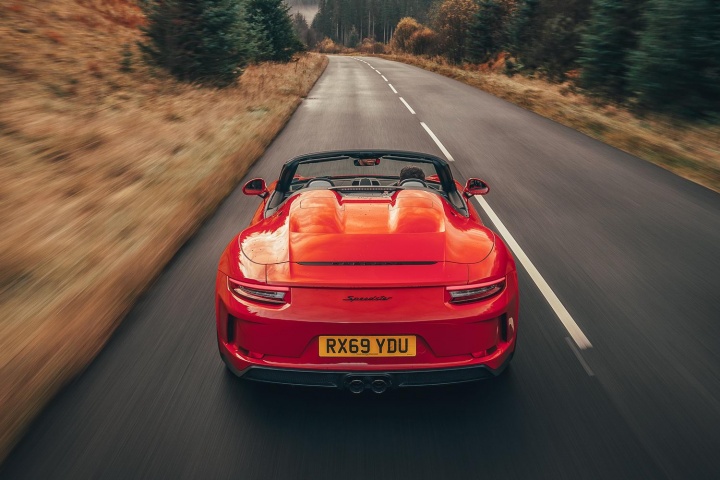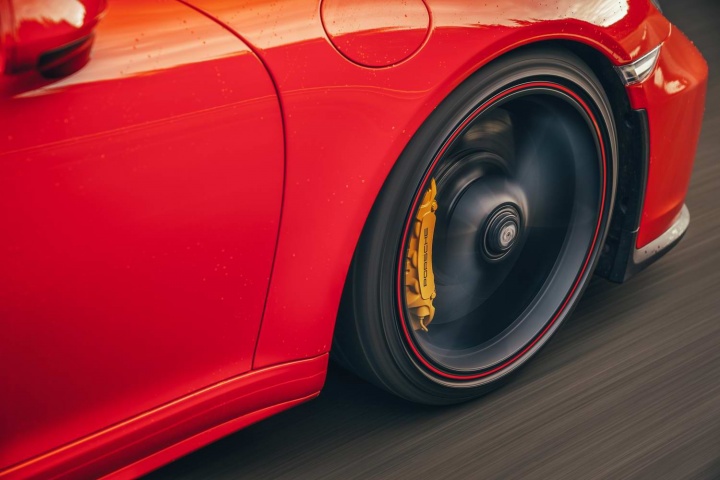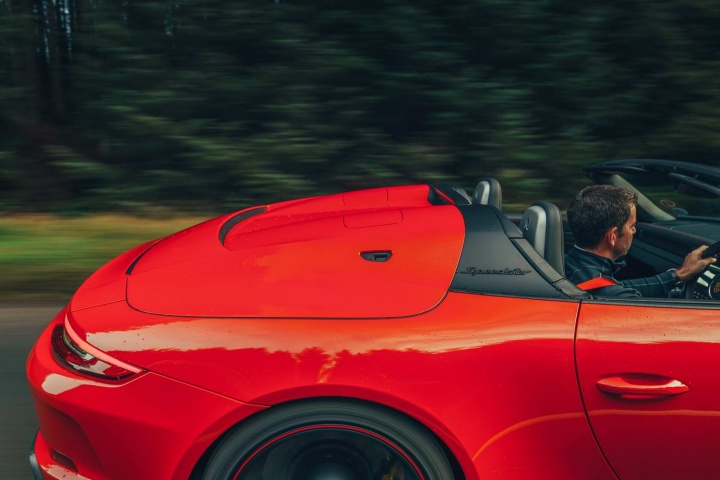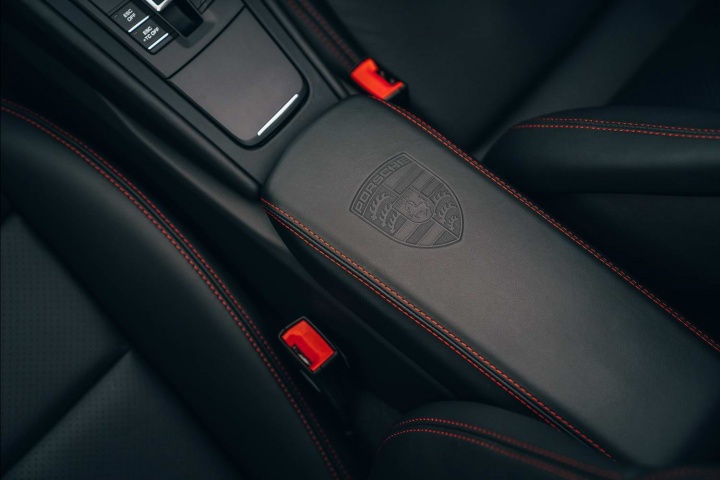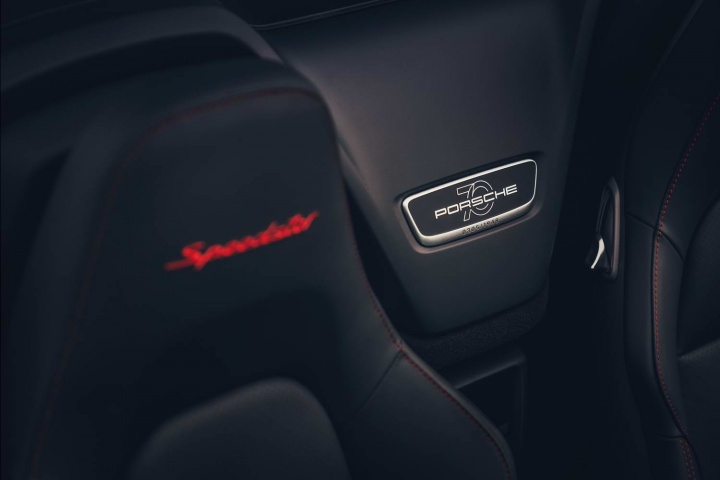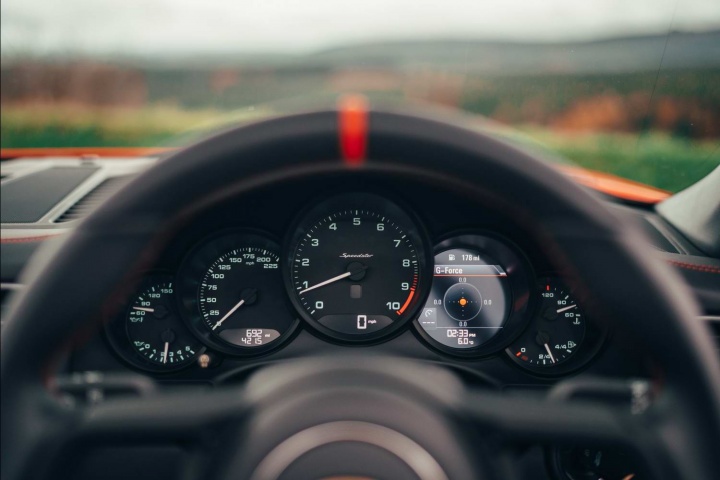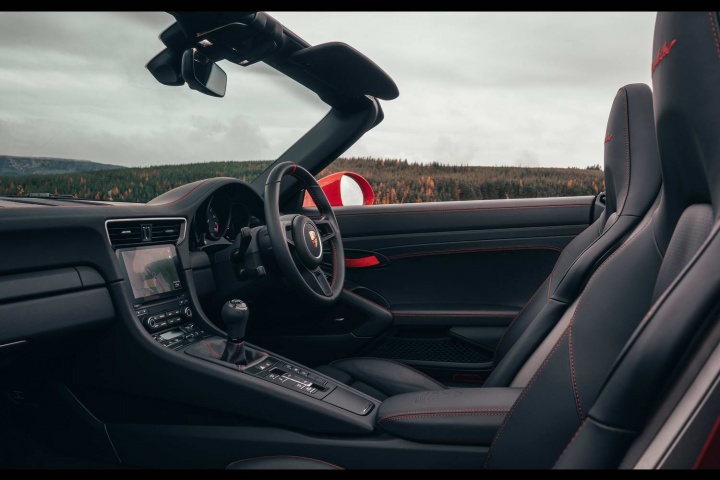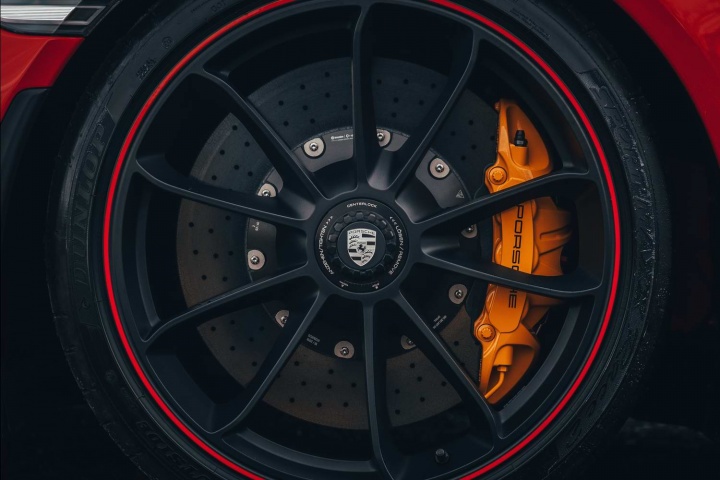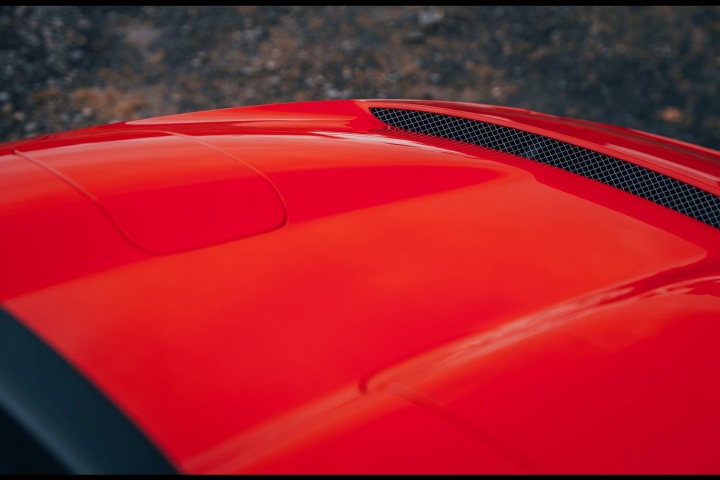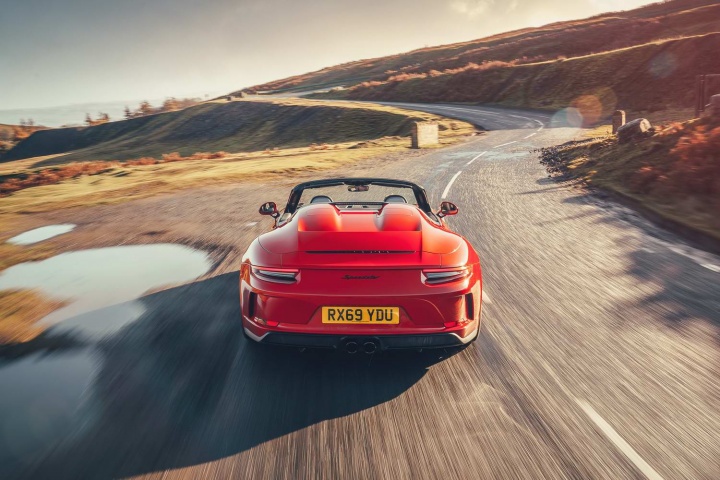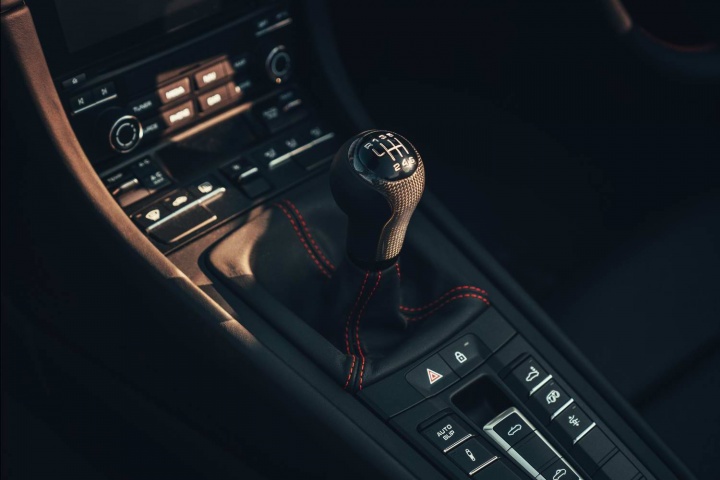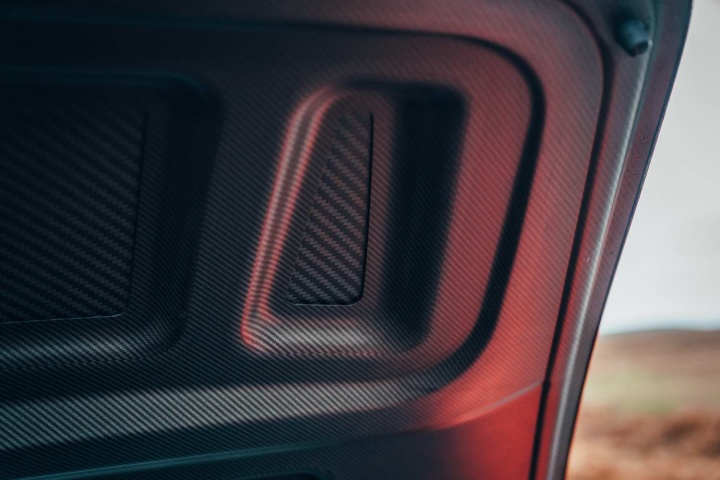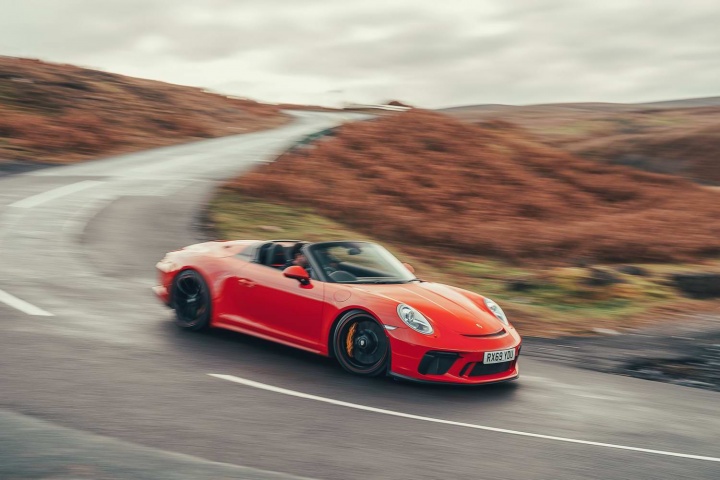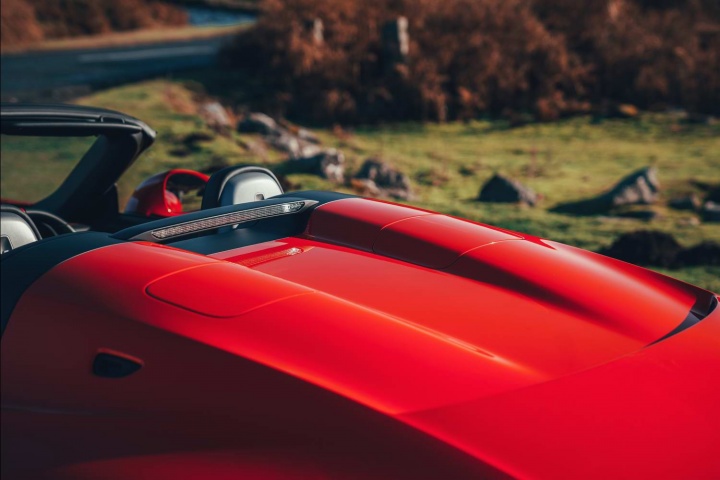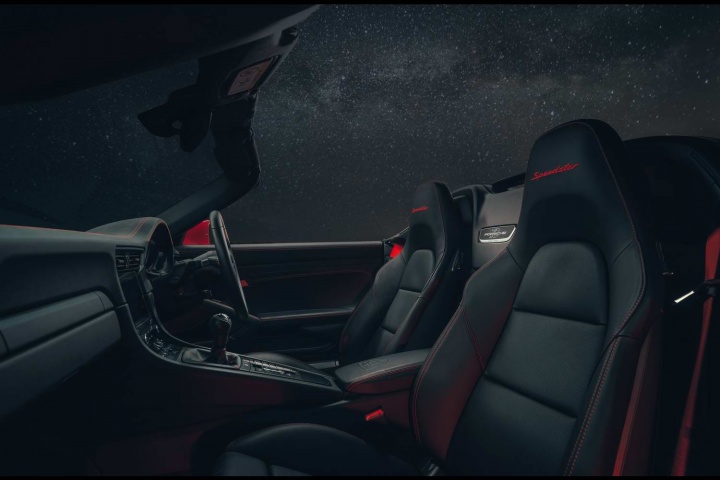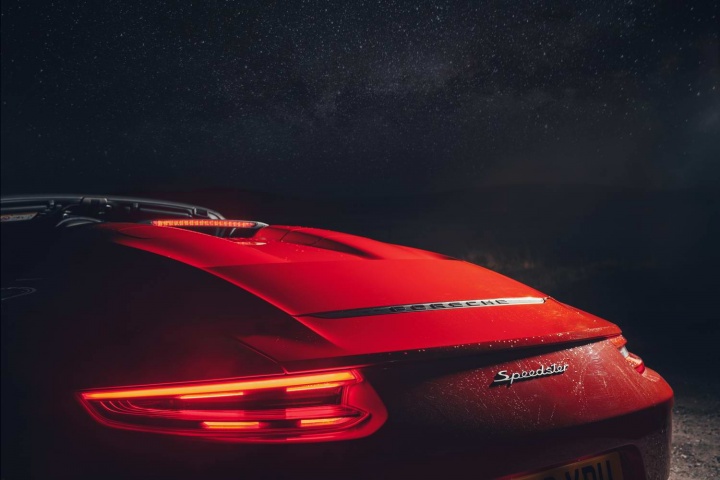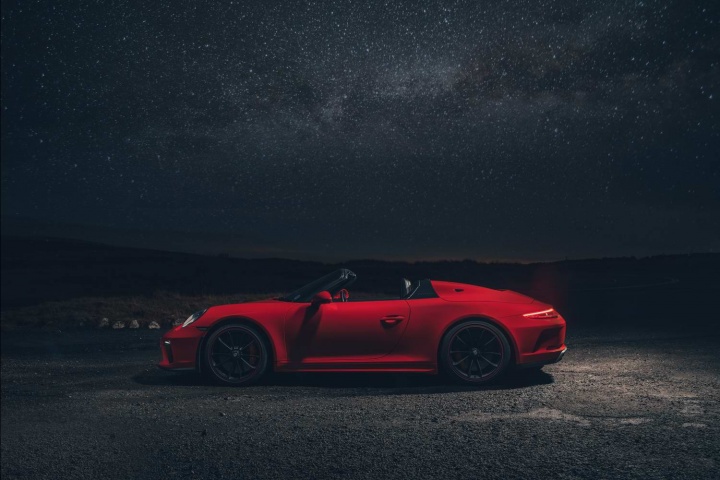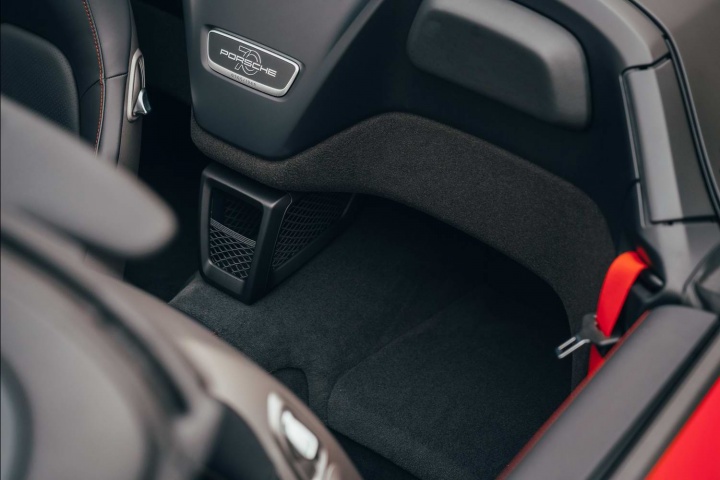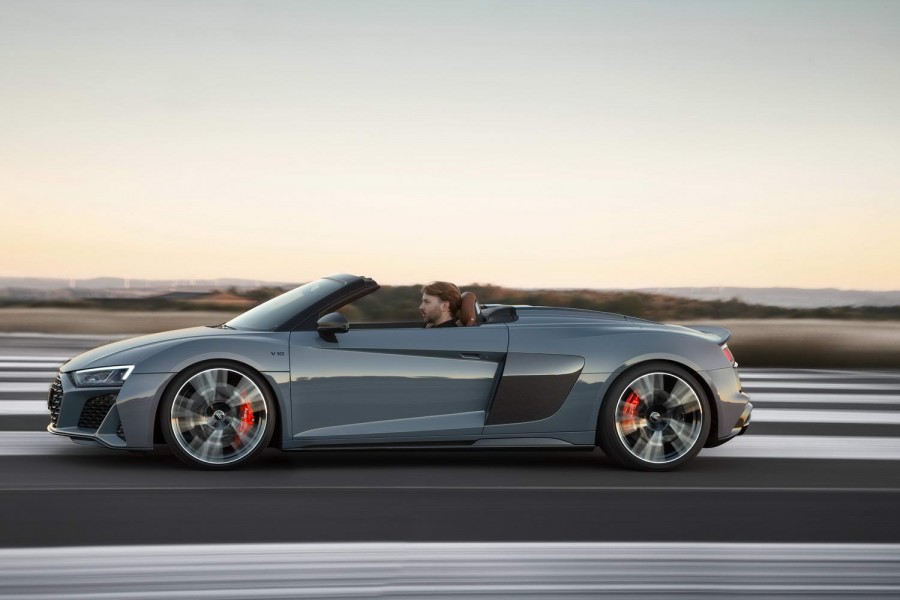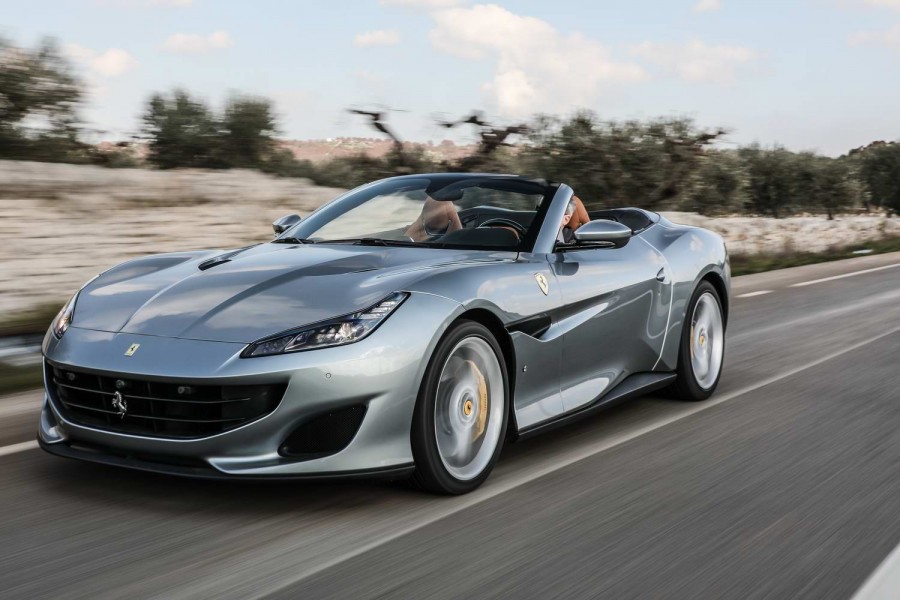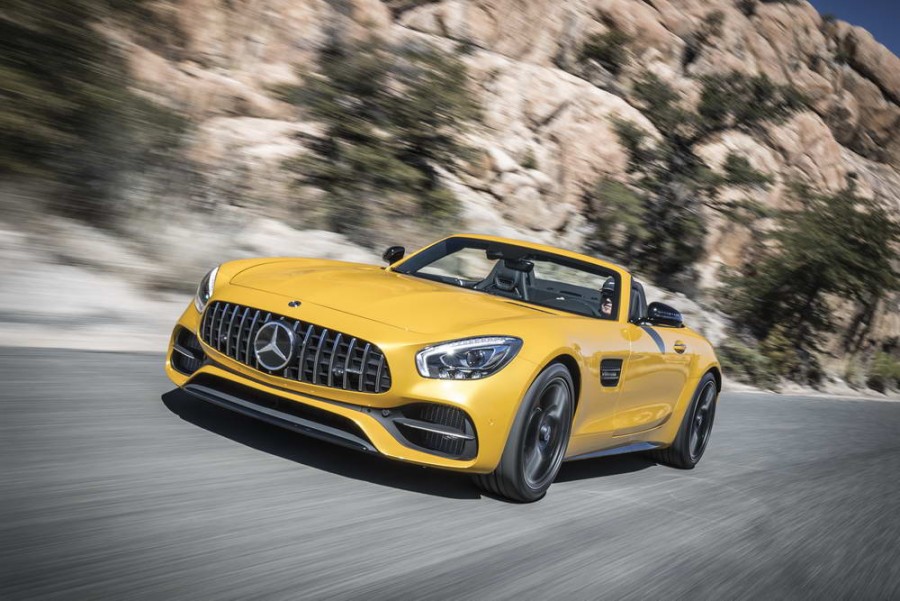If you want to plough your money in something that'll protect your investment, you could do a lot worse than the new Porsche 911 Speedster, a product of the German company's fabled GT department and the last glorious hurrah for the old 991-generation of the long-serving sports car. The good news is this particular investment is also an absolutely sublime car to drive; the bad news is, if you've not already got one on order or parked on your drive, you've missed the boat...
In the metal
If you're looking at this review of a 'new' Porsche 911 and scratching your head, thinking it doesn't look quite right, then don't worry. This is a '991'-generation variant, or Mk7 if you will, which means the 911 that launched in 2011 and which has been replaced by the 992 Mk8 already. However, go to the 911 factory in Zuffenhausen and you will see 991s and 992s, all intermingled, moving along the production line in unison - and it's cars like this one that keep the 991 flame flickering into the 992 era.
It's called the Speedster, which is one of Porsche's most revered badges... even if it hasn't actually been used on cars that would normally be the first port of call for a diehard enthusiast. It was a term originally appended, way back in 1954, to a US-market special of the 356 with a cut-down windscreen and a lightweight spec, which stayed in production until 1958. Often wrongly attributed as the car James Dean died in (his infamous fatal accident was in a Porsche 550 Spyder, not a 356 Speedster), its name wasn't copied again until the G-series 911 was about to die out in 1989, whereupon the Speedster tag was revived on a 231hp Carrera with wide 'Turbo' body, an idiosyncratic double-bubble rear transom and a vestigial fabric roof called a 'rain-top'.
The 964 that followed had two variants, an early one with a Turbo shell and then a narrower-frame version that arrived later into the 1990s, and it was supposed to be a halfway-house between a 964 Carrera 2 Cabriolet and a 964 RS in terms of driving talent. The 993 after that was a vanity project - never officially sold, two were built: one for Ferry Porsche's 60th birthday in 1995, and one for none other than Jerry Seinfeld. Yes, that Jerry Seinfeld. A few more 993 Cabriolets were converted to Speedster bodies by aftermarket coachbuilders, but - in essence - Porsche Speedster fans had to wait until 2011's 997 Speedster for the next official instalment, as Porsche didn't even bother trying with the 996. The 997 Speedster used a 413hp engine from the contemporary Carrera GTS and was limited to a build run of... wait for it... 356 units (see what Porsche has done, there?), but it still wasn't held as a great example of the 911.
This lengthy preamble brings us to the latest Speedster. The difference here is that, while it is a convertible, it is also a GT product. Underneath that distinctive body are the underpinnings from the sensational 991.2 GT3 manual, mainly because the head of GT cars, Andreas Preuninger, has always been a fan of the Speedster, despite its unusual and not universally idolised reputation. Maybe this time, he wanted it to be done right.
Thus, the 991 Speedster has a 4.0-litre, normally aspirated flat-six engine mounted at the rear. This has new individual throttle valves in a modified intake system, high-pressure fuel injectors with an optimised spray pattern and a 10kg-lighter stainless-steel sports exhaust system bolted onto it. These items liberate another 10hp from this mighty motor, for a peak of 510hp and, this despite the fitment of a pair of gasoline particulate filters (GPFs) in order to keep this engine compatible with EU6-DG emissions regs.
The bodywork is obviously bespoke to the Speedster and it uses plenty of carbon fibre to keep the weight gain down (it's only about 50 kilos heavier than a 991.2 GT3 manual coupe) while simultaneously doing much hidden work to maintain torsional rigidity. All of the front wings, the bonnet and that double-bubble cover for the (mainly electrically operated) roof are made of carbon-fibre composite, while the windscreen is more steeply raked than on any other open-top 991 (either the Cabriolet or the Targa). At the back, the extendable spoiler and bumper are both borrowed from the 'softer' GT3, the Touring, while the whole confection sits on forged, centre-lock 20-inch alloys.
Overall, the Speedster looks gorgeous. The 992 might now be out and about, but externally the 991 Speedster can live with it for jaw-dropping, head-turning magnetism. The same can't quite be said of the interior, though. Specific touches include black leather on the side bolsters and head restraints of the carbon-fibre bucket seats, as well as the door armrests and gear lever, with lightweight panels in the doors necessitating the fabric-loop pulls and stowage nets. 'Speedster' logos adorn the head restraints, the door sills and the central rev counter, which sits in a cluster bearing white needles and green numerals on black dials as a direct nod back to the 356 Speedster, and there's a plaque on the bulkhead to say which of the 1,948 examples (1948 being the year Porsche started making sports cars; the Speedster launched in 2018 as a 70th birthday present to itself) of this special 911 you're sitting in. Brave buyers could opt to go without either air conditioning or the satnav, so the Guards Red model we're in is a luxury item in comparison, but this cabin - as lovely as it is, and blessed with an oh-so-perfect driving position too - feels dated by comparison to the latest 911's showy, high-class interior. This is a very, very minor gripe about the Speedster, though, that we've only included in order for it to masquerade as some sort of objective critical balance, as you shall soon see...
Driving it
Along with that stellar 4.0-litre engine - which is one of the greatest normally aspirated combustion mills ever committed to a foundry, we might add - Porsche has made sure the Speedster has the chassis chutzpah to go with its undoubted performance. All of the following are fitted as standard and, in the case of the brakes, the four-wheel steering and the suspension, the Speedster gets its own specific states of tune or hardware to best suit its character: so there's Porsche Active Suspension Management (PASM) with a sports tune and a 25mm drop; as well as Porsche Torque Vectoring with a mechanical limited-slip differential; a tweaked version of Porsche Stability Management (PSM); Porsche Ceramic Composite Brakes (PCCB) with their own, bespoke compound of pads; Rear-Axle Steering; Porsche Active Drivetrain Mounts (PADM); and grippy Michelin Pilot Sport Cup 2 tyres wrapping those glorious 20-inch wheels.
Common consensus in the automotive world is that convertibles, roadsters, cabriolets, open-tops, Targas... whatever you want to call them, they're apparently not that good to drive and therefore they do not enjoy the kudos that coupe-equivalent models would, in and amongst the sniffy petrolhead elite. So the worry here is that the Speedster, essentially a GT3 Cabriolet of sorts, is going to suffer the same fate. Well, we're here to tell you that this is not the case. Most emphatically so. Oh, goodness, the Speedster is comprehensively magnificent.
There is nothing, nothing about the way it drives that we would change. Everything that was sensational about the 991.2 GT3 manual as a tin-top is preserved, as there's very little to report in the way of body flex on the Speedster, nor is there a sensation of trying to heft about a lot of extra mass. It feels like precisely what it is; a GT3 with its passenger compartment open to the elements. And so, as driving experiences go, the one the Speedster offers up is pretty much unparalleled by anything we can think of. Yep, we said 'anything'.
It's the noise, more than anything. Those GPFs are seen as the work of the devil by enthusiasts, often quietening down a road car's engine note in the name of emissions, but to hear the Speedster screaming around to that stratospheric 9,000rpm redline is to hear a man-made symphony like no other. It sounds like a special car when you just fire it up and amble around beneath 4,000rpm, but - despite strangely long gearing in the six-speed gearbox - you need to wind it up to really appreciate how awesome this car's soundtrack is. Coupled to the noise is, of course, ballistic performance and a wonderfully flexible powerplant; this 911 maybe labours a little below 2,000rpm, but everywhere else it has incredible reach and rapier-like throttle response. This last feature is a direct corollary of both normal aspiration and the PADM transmitting drive to the wheels as instantaneously as possible.
So it has relentless, intoxicating pace, it has a mesmerising voice and it gives you all the wind-in-the-hair thrills that any self-respecting convertible should. These factors alone might be enough to merit the Speedster's existence, yet the handling is out-of-this-world talented. The steering might not quite match up to the exalted standards of 911s of hydraulic yore, but it's better than almost anything else modern and power-assisted on the market today, as it's immediate in its reactions, faithful in its consistency and communicative through the rim. Add in front-end bite on the Speedster like you wouldn't believe and turn-in is almost prescient, the car getting tucked in at the apex before you know what's going on. Traction from the massive rear tyres is epic, allowing you to fully exploit that 4.0-litre motor (even in low-grip conditions, although - in such a scenario - a degree of circumspection is always required when unleashing 510hp through just two wheels) and keep the 911 boiling along. Body control is marvellous, too, but then the PASM damping needs some praise as well: it's rigid and unyielding in the Sport mode, which would make it suitable for track use, but there's just the right degree of pliancy to it in the Normal setting that allows the Speedster to breathe with lumpen road surfaces, rather than skittering all over the place like a nervous gazelle. This breeds further confidence in the driver to go on and extend the car, which in turn only delivers even greater dynamic rewards.
The PCCB? Epic, with monster bite and such perfectly crisp pedal modulation that there can be no car in the world in which it is easier and more satisfying to enact heel-and-toe downshifts than the 911 Speedster, making the 'Auto Blip' function (itself exceptional) look like a frippery. The gearbox? Wonderful, with a throw and action that involves you right in the heart of the action without ever being obstructive. Weight transfer? Just telegraphed at exactly the right point to let you control any slides or losses of traction, as and when they occur, in a gleeful exhibition of driver involvement. In short, the 911 Speedster is a car that makes the act of driving feel heavenly, whether you're doing 15km/h or 150km/h, and all points in between. It is an astonishing engineering achievement.
What you get for your money
We'd be tempted to give the Speedster a very low mark here, if we were going to mark it at all, because its basic price of about €400,000 seems absolutely extortionate on the face of it, when a 991.2 GT3 started at around €210,000. But here are the key things that save the Speedster, plus the main reason why we're not giving a mark for this section at all: one, to drive, this thing is godly, so 400-grand doesn't seem an outrageous asking price in the slightest; two, GT department Porsches tend to hold their money like no other cars can, to the degree that most of them appreciate in value as soon as they become used vehicles - thus, anyone who has a Speedster is likely to get €500,000 and more for it down the line; and three, and why we've gone with no rating, so in demand was this thing that pretty much as soon as the German company announced the 911 Speedster in its 70th anniversary year of 2018, all 1,948 examples were quickly snapped up by eager Porsche enthusiasts and collectors. So you can't actually buy this insanely good car, even if you had the funds and you wanted to.
Summary
The Porsche 911 Speedster: the greatest open-top car you'll ever drive. It's that simple. And if that doesn't sound like much of an accolade, then know it has to be in the top ten of all sports cars, of any shape or price, built so far. To sample it is a transcendental experience, that merely leaves you yearning for more. All we can say is there are 1,948 extraordinarily lucky people in this world. And we envy every one of them more than you could possibly imagine.

